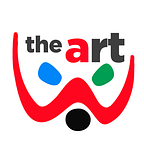The Expressionism of ‘Die Brücke’ goes up for auction in Munich
The Expressionism of ‘Die Brücke’ goes up for auction in Munich
Ernst Ludwig Kirchner — Das blaue Madchen in der Sonne — 1910Erich Heckel — Zwei Madchen am Wasser — 1910
The Gerlinger collection of works by the Expressionist group “Die Brücke” (The Bridge) will be auctioned by Ketterer Kunst in Munich.
Source: Ketterer Kunst. Images: Ernst Ludwig Kirchner, “Das blaue Mädchen in der Sonne”. Oil on canvas, 1910, 71 x 81 cm ·· Erich Heckel, “Zwei Mädchen am Wasser”. Oil on cardboard, 1910, 55.4 x 70.5 cm.
Since the 1950s, Hermann Gerlinger has been building up, with the help of his wife Hertha Gerlinger, a very complete collection of works by the artists of the German Expressionist group “Die Brücke” (The Bridge), consisting of about a thousand works including paintings, drawings, watercolors, etchings, sculptures and various documents. For decades, the works were on loan to various public institutions, and now they will be sold at the Ketterer Kunst auction house in Munich, with part of the proceeds going to three charitable organizations.
Naturally, the core of the collection is made up of works by Erich Heckel, Ernst Ludwig Kirchner, Karl Schmidt-Rottluff and Fritz Bleyl, the founders of the group. Although these artists have not achieved market prices as high as those of other expressionist artists such as Wassily Kandinsky or Franz Marc, this does not mean that the market has remained oblivious to their importance. In 2006, a ‘Berliner Strasserszene’ by Ernst Ludwig Kirchner was auctioned at Christie’s for $38.1 million.
About “Die Brücke” (The Bridge)
“Die Brücke” (The Bridge) was founded in Dresden by the painters and illustrators Ernst Ludwig Kirchner (1880–1938), Karl Schmidt-Rottluff (1884–1976) and Erich Heckel (1883–1970), as well as the architect Fritz Bleyl (1880–1966), who left the group two years later. “Die Brücke” generally constituted a very cohesive group, based on the collaboration between artists, and on the simultaneous admiration for primitivism and contempt for the bourgeoisie. They invited all young artists to join the group, regardless of their style or nationality, noting in the Founding Manifesto itself (written by Ernst Ludwig Kirchner) that “everyone who reproduces, directly and without illusion, whatever he senses the urge to create, belongs to us.” They experimented with woodcut, and their youthful impetus opened the door for important painters such as Emil Nolde (1867–1956), Max Hermann Pechstein (1881–1955) and Otto Müller (1874–1930) to join the group, but there was also a lack of leadership, especially when Kirchner moved to Berlin in 1911. Some time after the breakup of the group with the outbreak of World War I, Erich Heckel himself admitted that “what we had to remove ourselves from was clear; where we were heading was certainly less clear”.
More at: Expressionism and New Objectivity · The narrators of an unrested zeitgeist #2022 #ArtMarket #theartwolf
